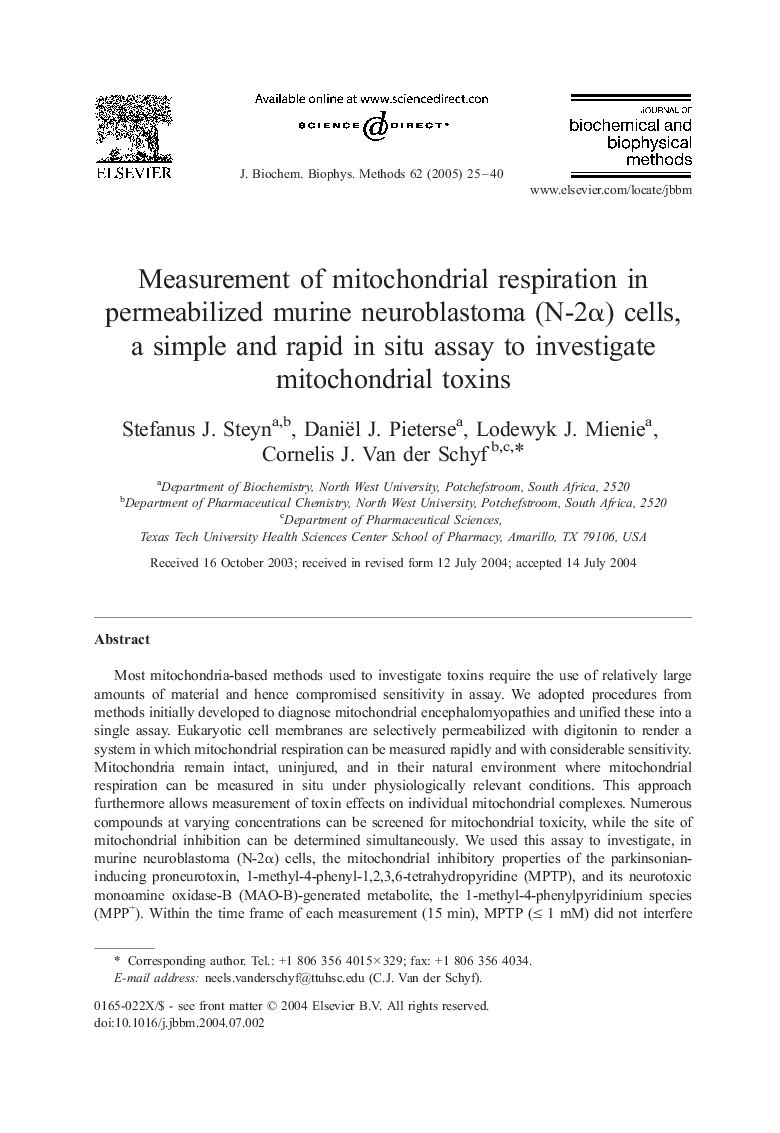| Article ID | Journal | Published Year | Pages | File Type |
|---|---|---|---|---|
| 10825178 | Journal of Biochemical and Biophysical Methods | 2005 | 16 Pages |
Abstract
Most mitochondria-based methods used to investigate toxins require the use of relatively large amounts of material and hence compromised sensitivity in assay. We adopted procedures from methods initially developed to diagnose mitochondrial encephalomyopathies and unified these into a single assay. Eukaryotic cell membranes are selectively permeabilized with digitonin to render a system in which mitochondrial respiration can be measured rapidly and with considerable sensitivity. Mitochondria remain intact, uninjured, and in their natural environment where mitochondrial respiration can be measured in situ under physiologically relevant conditions. This approach furthermore allows measurement of toxin effects on individual mitochondrial complexes. Numerous compounds at varying concentrations can be screened for mitochondrial toxicity, while the site of mitochondrial inhibition can be determined simultaneously. We used this assay to investigate, in murine neuroblastoma (N-2α) cells, the mitochondrial inhibitory properties of the parkinsonian-inducing proneurotoxin, 1-methyl-4-phenyl-1,2,3,6-tetrahydropyridine (MPTP), and its neurotoxic monoamine oxidase-B (MAO-B)-generated metabolite, the 1-methyl-4-phenylpyridinium species (MPP+). Within the time frame of each measurement (15 min), MPTP (⤠1 mM) did not interfere with in situ mitochondrial respiration. As expected, MPP+ was found to be a potent Complex I inhibitor but surprisingly also found to inhibit Complex IV. Optimized conditions for performing this assay are provided.
Related Topics
Life Sciences
Biochemistry, Genetics and Molecular Biology
Biochemistry
Authors
Stefanus J. Steyn, Daniël J. Pieterse, Lodewyk J. Mienie, Cornelis J. Van der Schyf,
